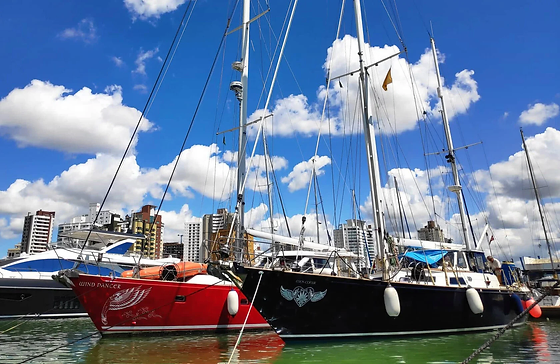
Italian Sailing Boat Manufacturers. Classic and modern sailing boats and yachts from the manufacturer. Check our website for more info for the prices
Italy is known for its rich maritime heritage and has a long history of boat and yacht building. Italian sailing boats are renowned for their craftsmanship, design, and performance. Several Italian yacht manufacturers produce a wide range of sailing vessels, catering to both cruising and racing enthusiasts. Here are a few examples of Italian sailing boat manufacturers and some popular models:
1. Beneteau Oceanis Yachts:
- Beneteau is a French yacht manufacturer with a strong presence in Italy. They produce the Oceanis line of cruising sailboats, which are popular worldwide for their comfort, seaworthiness, and innovative design. Oceanis models often feature spacious interiors and modern amenities.
2. Dufour Yachts:
- Dufour Yachts, based in Italy, specializes in designing and building performance cruisers. Their sailboats are known for their elegant lines, quality craftsmanship, and excellent sailing characteristics. The Dufour Grand Large series is a notable line of cruising yachts.
3. Nautor’s Swan:
- Nautor’s Swan, although based in Finland, has a significant presence in Italy and is known for producing high-performance sailing yachts. Swan yachts are highly regarded for their construction, luxurious interiors, and competitive racing capabilities.
4. Cantiere del Pardo (Grand Soleil):
- Grand Soleil, a brand under Cantiere del Pardo, is an Italian yacht manufacturer known for its performance-oriented sailboats. Their models often combine speed with comfort, making them suitable for both cruising and racing.
5. Solaris Yachts:
- Solaris Yachts, an Italian shipyard, specializes in semi-custom and custom sailing yachts. Their sailboats are recognized for their exceptional build quality, attention to detail, and seaworthiness. Solaris models range from cruiser-racers to luxurious bluewater cruisers.
6. Comar Yachts:
- Comar Yachts is an Italian yacht builder that offers a range of sailing boats, including the Comet line of performance cruisers and racer-cruisers. These boats are known for their speed and comfort.
7. Italia Yachts:
- Italia Yachts is an Italian manufacturer that focuses on performance cruising yachts. Their sailboats are designed for sailing enthusiasts who value both speed and luxury. Italia Yachts’ designs often feature sleek lines and comfortable interiors.
8. Mylius Yachts:
- Mylius Yachts is an Italian yacht builder known for its performance-oriented sailing boats. Mylius models are often designed with a focus on racing capabilities while maintaining comfortable living spaces.
Italian sailing boats are appreciated worldwide for their combination of style, performance, and craftsmanship. Whether you’re looking for a comfortable cruising yacht or a high-performance racer, Italy offers a range of options to suit various sailing preferences.
Boat Manufacturers
Boat manufacturing is a multifaceted industry that involves designing, constructing, and assembling boats and other watercraft. This industry encompasses a wide range of vessel types, from small recreational boats and luxury yachts to commercial and military vessels. Here’s an overview of boat manufacturing:
1. Design and Engineering:
- Boat manufacturing begins with the design and engineering phase. Naval architects and marine engineers create detailed plans and specifications for the boat, considering factors such as size, shape, materials, propulsion systems, and intended use.
2. Material Selection:
- The choice of materials is crucial in boat construction. Common materials include fiberglass, aluminum, steel, wood, and composite materials. The selection depends on factors like durability, weight, and the boat’s intended purpose.
3. Hull Construction:
- The hull is the main body of the boat, and its construction varies based on the chosen material. For example:
- Fiberglass boats involve laying fiberglass cloth and resin over a mold to create the hull.
- Aluminum boats are built by welding together aluminum sheets or extrusions.
- Wooden boats involve the assembly of wooden planks or veneers.
4. Assembly and Systems Integration:
- Boat manufacturers assemble various components and systems into the hull, including:
- Engines and propulsion systems
- Electrical systems
- Plumbing systems
- Navigation and communication equipment
- Interiors, such as cabins, seating, and amenities
5. Quality Control and Testing:
- Quality control measures are crucial to ensure the boat meets safety and performance standards. This involves inspections, testing of systems, and adherence to design specifications.
6. Customization:
- Many boat manufacturers offer customization options, allowing buyers to tailor the boat’s design, features, and finishes to their preferences. This is common in luxury yacht construction.
7. Certification and Compliance:
- Depending on the boat’s type and intended use, it may need to meet specific certifications and regulatory requirements. Manufacturers must ensure their boats comply with safety, environmental, and maritime regulations.
8. Distribution and Sales:
- Once manufactured, boats are distributed through dealerships, brokers, or directly from the manufacturer. Boat shows and exhibitions are common venues for showcasing new models and attracting buyers.
9. Maintenance and After-Sales Support:
- Boat manufacturers often provide maintenance services and after-sales support, including warranty coverage and spare parts availability.
10. Innovation and Technology: – Advances in technology, including propulsion systems, materials, and digital navigation and control systems, continue to influence boat manufacturing, improving efficiency, performance, and sustainability.
11. Environmental Considerations: – Increasingly, boat manufacturers are adopting eco-friendly practices by using sustainable materials, reducing emissions, and implementing environmentally responsible manufacturing processes.
Boat manufacturing is a dynamic and diverse industry that serves a broad spectrum of customers, from recreational boaters to commercial and military operators. The industry’s growth and innovation are driven by evolving consumer preferences, emerging technologies, and a commitment to safety and environmental responsibility.
